This post is also available in: Italian
Reading Time: 5 minutesJust one year ago, VMware has announced vSAN 6.6… now it’s the turn of vSAN 6.7, contextually of the release of vSphere 6.7 GA.
VMware vSAN is the VMware’s Software Defined Storage (SDS) solution that also fits in the hyper(visor)-converged model to build a simple (to be managed) and scalable HCI solution. Although is a separate product, the core functions to implement it are already present in the vSphere versions making really easy to deploy and enable it.
VMware declares more than 10.000 customers and a market share (for the HCI world) of more than 32% (in Q4 2017 according to with IDC’s 4Q2017 Worldwide Quarterly Converged Systems Tracker, April 2018)… very interesting numbers and huge product grow in only a few years.
Also, it’s really fast in its releases and new features implementations:
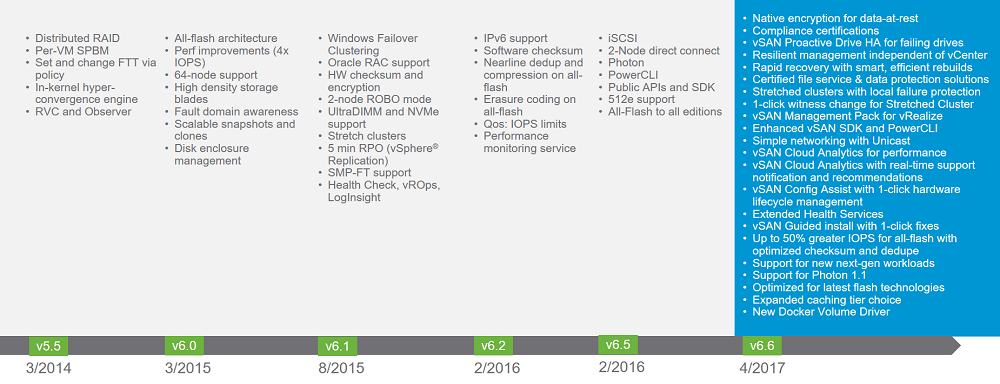 The new vSAN 6.7 (the 7th generation of the product) will add several new features:
The new vSAN 6.7 (the 7th generation of the product) will add several new features:
- New HTML5 UI: Finally the vSphere Client in HTML5 is supported also for vSAN. The new vSAN 6.7 introduces a new HTML5 UI inside the vSphere Client, that is based on the “Clarity” framework, also used in other VMware products. However, the legacy vSphere Web Client is still available in this release, also because there are still some vSphere tasks available only from it. But it’s another small step to finally have a single web client.
The HTML5 UI is a great step forward in providing vSAN users an intuitive and efficient user experience.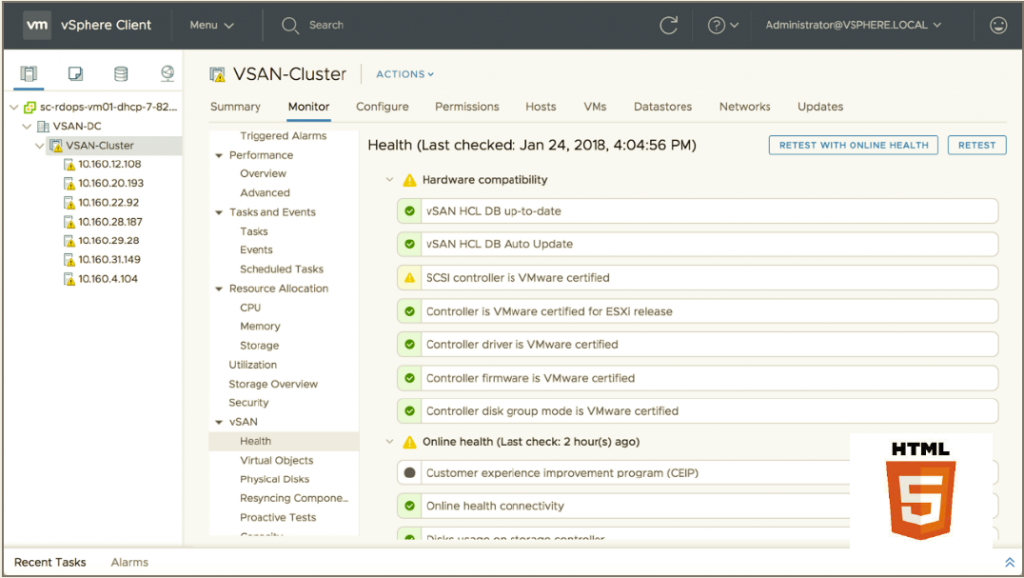
- vRealize Operations within vCenter: Traditionally, using vRealize Operations with VMware vSAN meant that an administrator needed to use two separate interfaces.
A new feature known as “vRealize Operations within vCenter” provides an easy way to see vRealize intelligence directly in the vSphere Client. vCenter now includes an embedded plugin that enables a user to easily deploy and configure a new vRealize Operations instance or select an existing instance.
From there, vRealize Operations analytics are visible in the new HTML 5 based vSphere Client using built-in dashboards for vCenter and vSAN.
In case more detailed information are needed, the full collection of dashboards in vRealize Operations can be launched from the vSphere Client with two simple clicks.

- Support for WSFC Using vSAN iSCSI Service: vSAN 6.7 now expands the flexibility of the vSAN iSCSI service to support Windows Server Failover Clusters (WSFC). Note that vSAN already supports modern Windows application layer clustering technologies such as Microsoft SQL Always-on Availability Groups (AAG), Microsoft Exchange Database Availability Groups (DAG), and Oracle Real Application Clusters (RAC).
vSAN 6.7 supports shared target storage for WSFC, but note that it’s not used the shared VMDK, but instead an iSCSI targets that are exposed using the vSAN iSCSI service. .
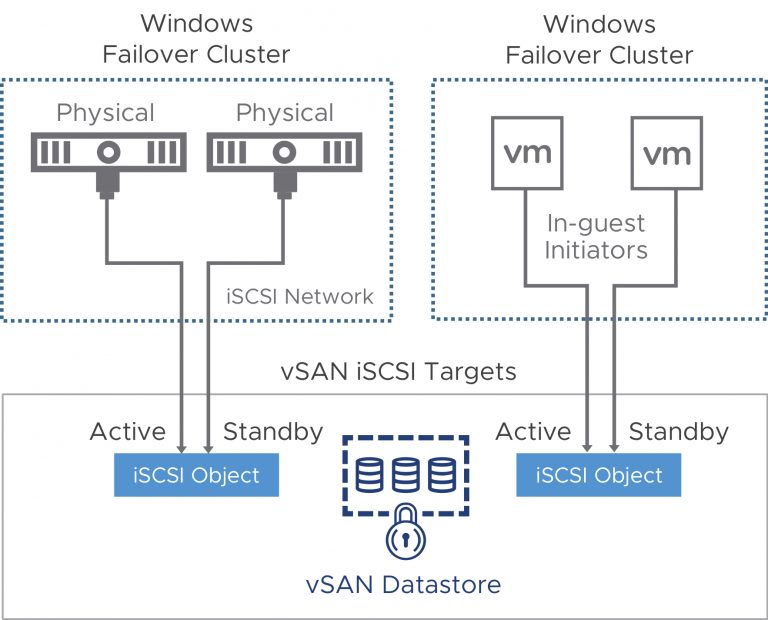
- Adaptive data placement and improved failure handling: vSAN 6.7 introduces an all-new Adaptive Resync feature to ensure a fair-share of resources are available for VM I/Os and Resync I/Os during dynamic changes in load on the system. An improved vSAN storage scheduler uses congestion signaling to detect both the read and write throughput capabilities of a vSAN disk group.
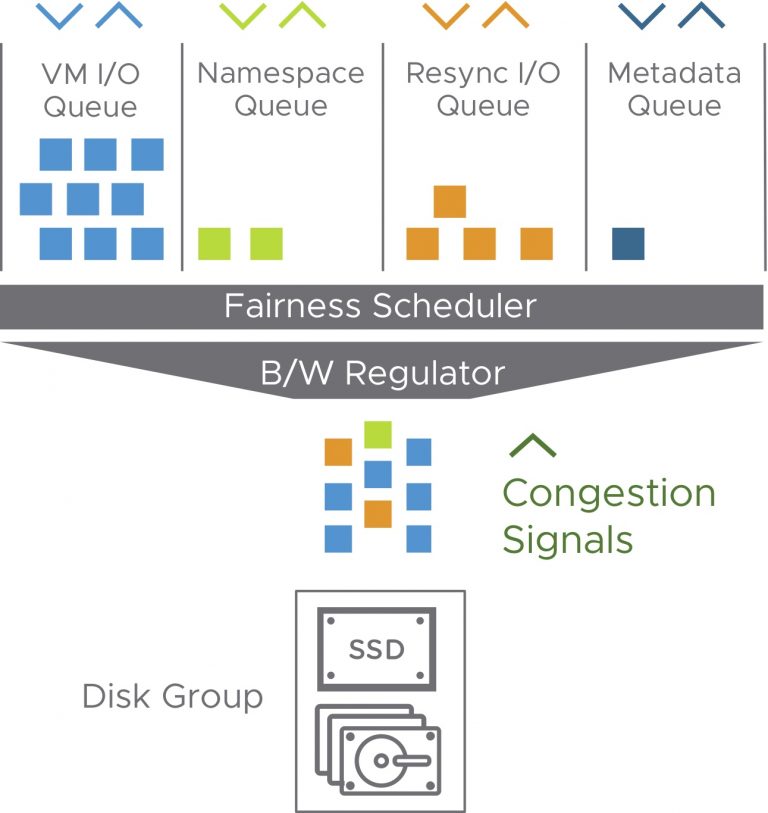
- Performance Improvements through faster destaging: VMware is always looking for ways to improve the performance of vSAN and the consistency of its performance. vSAN 6.7 continues this drive for better performance and consistency through optimizations made in the data path. vSAN 6.7 optimizes the de-staging mechanism, resulting in data that “drains” more quickly from the write buffer to the capacity tier. The ability to de-stage this data quickly allows the cache tier to accept new I/O, which reduces or eliminates periods of congestion. This optimization provides a positive impact for not only VM I/O, but all resynchronization traffic as well.

- Faster decommissioning of a host through replica consolidation: Smarter placement of vSAN data for more efficient decommissioning, consolidates replicas living across
multiple fault domains (hosts) while maintaining FTT. Results in fewer data rebuilt and less temporary space usage.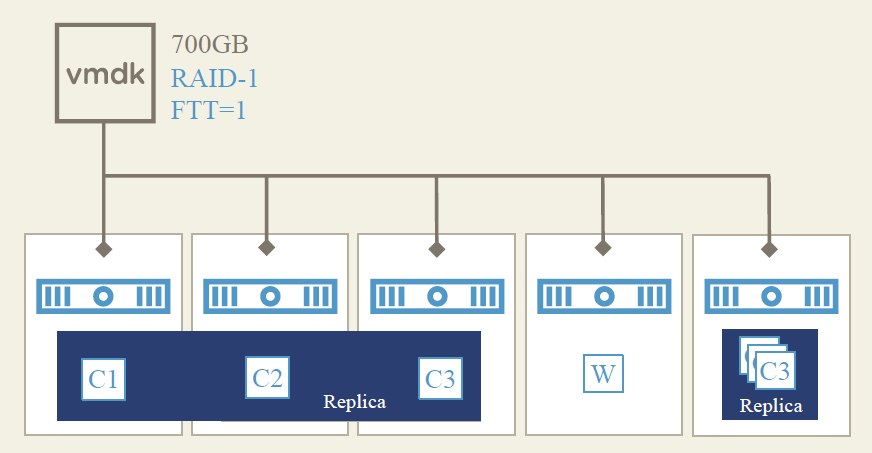
- Improvements for Stretched Clusters: vSAN 6.7 will provide improved isolation of vSAN meta data, by prevents data traffic from being routed via vmknic for witness host traffic upon link failure. This was previously supported only in 2-node configurations, but now is extended in all Stretched cluster configurations.
Also, there is a better intelligent site continuity for Stretched Clusters with a more robust logic in transient site failures to determine quorum.
For more details, see vSAN 6.7 Technical Overview


